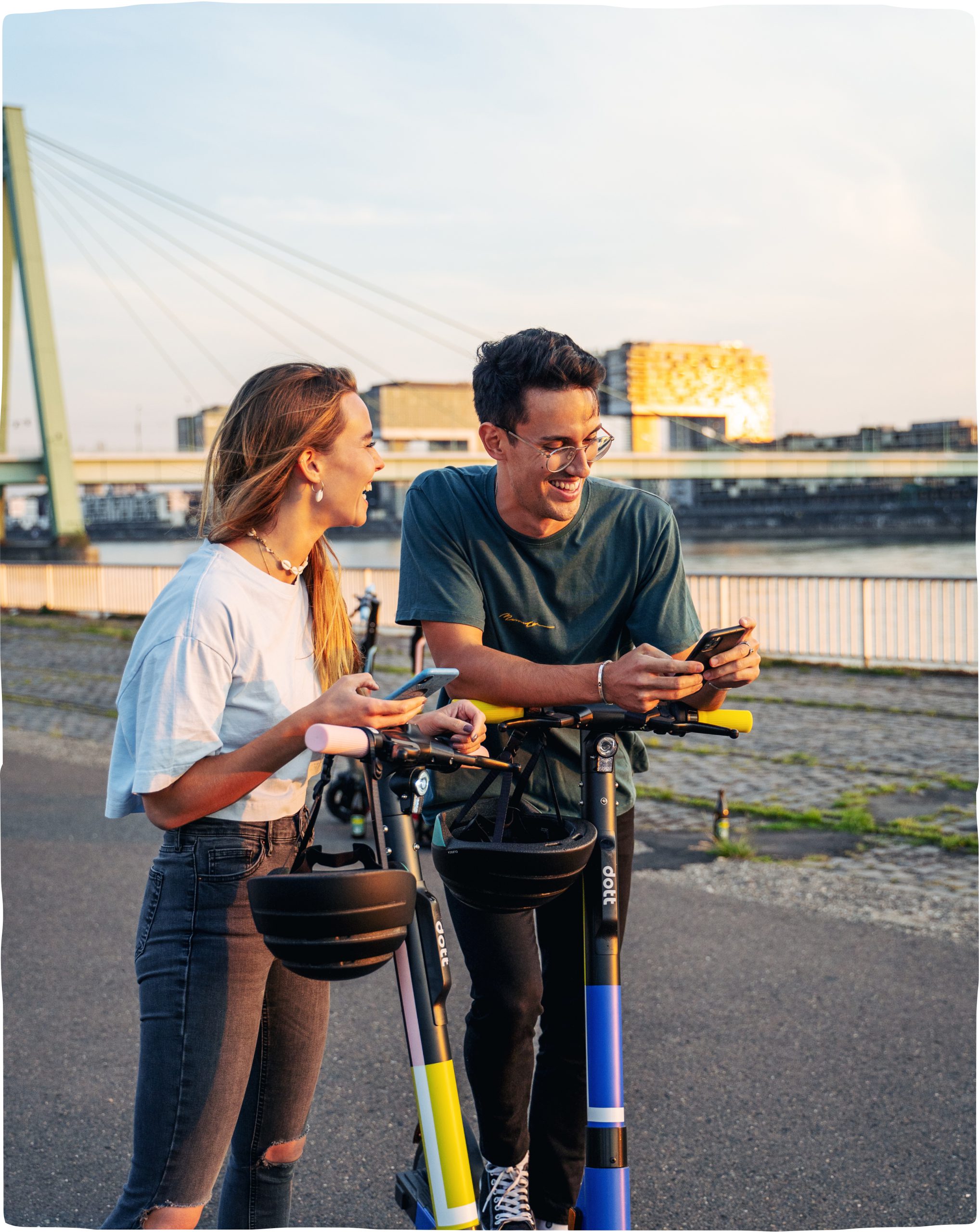


4 years ago
Micromobility refers to small, lightweight vehicles, like e-scooters and e-bikes, that people drive themselves. These tools help reduce traffic congestion, and are more affordable and eco-friendly than traditional modes of transport.
Here at Dott, we’re proud to say that our e-scooters are part of the micromobility movement, and that we’re helping people get around responsibly in the new normal.

You’ve probably experienced being on a packed bus or train, face pressed against a stranger’s arm, sweating, and counting down the stations to your stop. This may have been part of life before the pandemic, but it can’t be now. One survey even reveals that over half of people feel uncomfortable using subways and buses after recent lockdowns.
Another issue is that public transport links across Europe have been severely limited because of the pandemic. In fact, complying with government social distancing measures has meant that European transport capacity has decreased by 15 to 35 percent. While this drop didn’t cause extensive disruption during lockdowns, as industries reopen, people are searching for safe, quick, and efficient travel options.
E-scooters have fewer points of contact than buses, trains, and trams, and are viewed as lower risk for spreading the virus.

We bet that you’ve already seen e-scooters zipping around your city before the coronavirus struck. You might have thought that they were simply a fun form of transport. Now, however, they’re a necessary way to get around.
Why?
Well, e-scooters have fewer points of contact than buses, trains, and trams, and are viewed as lower risk for spreading the virus. Because e-scooters carry one person at a time, and riders are in control of their position on the road, they can easily follow social distancing measures too. Not to mention, people can use e-scooters to continue their daily commutes and errands, helping restore a sense of normalcy to life
Oh, and people get to do so in the great outdoors – which after long quarantine periods, is a welcome treat.
Despite an initial drop in micromobility use, the industry is actually expected to emerge stronger from the pandemic because of how it’s shaping people’s travel habits and promoting green travel. For example, in September, Dott e-scooters in Lyon moved the equivalent of five bus lines running at full capacity.
Our streets are even changing to adapt. ‘Slow streets’ are where roads are closed to cars but are accessible to e-scooters, e-bikes, and pedestrians. Brussels has a 20 km/h (12 mph) zone in the downtown area where both pedestrians and riders can safely pass. These ‘slow streets’ don’t only (literally) pave the way for e-scooter use, they provide riders with snappy shortcuts and access to city hubs. And, they contribute to the EU’s 2050 zero carbon emissions strategy. Win, win.
Safety is always our number one priority, and we’ve introduced measures to ensure that our riders, in-house team, and wider stakeholders are covered.

So we know that micromobility is on the rise and we know that users want a clean journey. As an e-scooter operator, we want to take extra care of our riders in such a critical time. Safety is always our number one priority, and we’ve introduced measures to ensure that our riders, in-house team, and wider stakeholders are covered.
That’s why we’ve fitted all our e-scooters’ handlebars with antiviral copper tape grips to significantly lower the survival time of bacteria on them. We also have a maintenance team that disinfects every scooter after max. 10 rides in complete PPE. Plus, our app and social media have a variety of prompts and short tutorials explaining best hygiene practices on our e-scooters.
We’re people and planet focused when it comes to transport. We’re careful to follow and implement guidance from the World Health Organization and we work closely with local councils and organizations to ensure that our e-scooters are a green form of city travel. We hope to free our cities from pollution with our electric-powered rides, and we’re committed to reusing and recycling hardware when it’s no longer roadworthy.
There’s a big journey ahead of us, but we’re confident that e-scooters play an important role in reaching a better destination for everyone.